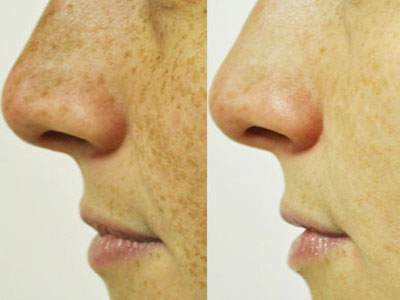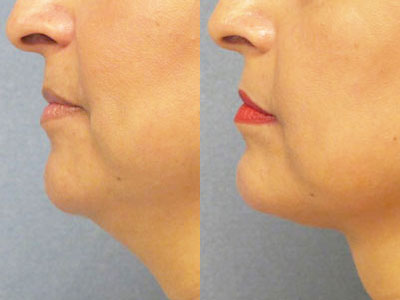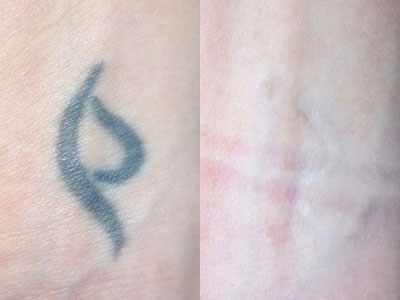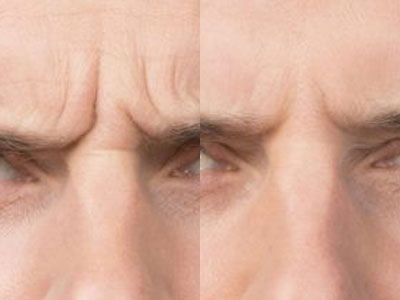Your co-worker won’t stop talking to you.
Normally you are happy to listen to her riveting tales, but today the sound of her voice, the glare of your workspace, and even the smell of her coffee sends piercing pain to your head.
It’s so bad you need to leave work early.
Migraine has again ruined your day. You need relief.
This article will share how using Botox for migraines might be an effective solution for your headache.
What Are Migraines?
Many people don’t realize that migraines are more than really bad headaches. Migraine is a debilitating neurological disease that affects women three times more often than men.
A migraine headache is just one phase of the migraine attack, but it is the most recognizable phase.
A migraine headache can have the following symptoms:
- severe stabbing head pain
- throbbing in the head
- pain on a single side of the head
- nausea
- vomiting
- light sensitivity
- insomnia
- nasal congestion
But migraine headaches are different depending on the person.
One person may experience a headache that feels like an ice-pick, while another may have a low throbbing that lasts for days. Sometimes it’s on the right, sometimes on the left.

Are Migraines Different Than Headaches?
Yes. The reality is that headaches are just one of the many symptoms and stages of migraine – the real issue is neurological.
Causes of migraines are hard to pinpoint.
Doctors are now getting closer to understanding the underlying causes of migraine, and there appear to be both environmental and genetic elements.
A migraine trigger is a factor that can start the migraine attack; each person can have unique triggers, or be triggered by something different each time they get a migraine.
Moderating the following lifestyle triggers can help you avoid migraine attacks:
- exercise
- caffeine & alcohol
- diet
- stress
- dehydration
- sleep
But there are also triggers that you can’t do anything about. According to a study published in Headache: The Journal of Head and Face Pain, the following environmental factors may also trigger a migraine:
- hormonal changes
- sensory overload from lights
- smell sensitivity
- weather variations
- reactions to altitude
How Long Do Migraines Last?
Migraine attacks can last anywhere from a few hours to a few days depending on the person or situation. There are four distinct phases, which can vary greatly in length.
Stage 1: Prodrome
Migraine attacks can begin with a prodrome, or pre-headache, stage which can provide a warning that a migraine headache is on the way.
Not everyone recognizes a prodrome phase, nor does an individual consistently get this warning.
Symptoms of prodrome are often subtle and personal, and include:
- concentration issues
- Irritability
- sleep trouble
- fatigue
- depression
- food cravings
Being aware of when these symptoms begin can help someone with migraine purposefully avoid their triggers, potentially lessening the severity of their oncoming headache.
Stage 2: Aura
A migraine aura is a period of sensory disturbance, usually affecting sight.
Migraine aura can present itself as unique spots or lights in an individual’s vision, or even eye blurriness and partial sight loss. Some people also get a tingling sensation.
About one-third of people with migraine experience an aura, which can last for up to an hour.
Stage 3: Headache
The well-known headache is the third stage of a migraine attack and can stay for a couple of hours or a few days.
It can feel like drilling or stabbing. It can be debilitating or mild, and may not be the same each time.
Medication is the current first-line from most doctors, but Botox may help prevent your headaches.
Stage 4: Postdrome
Most people also go through a postdrome stage lasting a day or two after the headache of their migraine attack.
Postdrome is sometimes called a migraine hangover; it is the period of time after a headache when your body is still having migraine effects.
This stage can include physical symptoms like dizziness, fatigue, or aches, much like recovering from another illness. It can also be a time of mental confusion or depression.
Depression has a serious connection with migraine. The longer someone goes ineffectually treated, the greater their chances of suffering from depression. In addition, depression can sometimes lead to the development of migraine. The two conditions appear to have a shared mechanism.

Does Botox Help Migraines?
The good news is that new research is showing that Botox helps migraines, and the government is recognizing the effectiveness of Botox shots for migraine headaches.
Scientific Journal #1: Otolaryngology–Head and Neck Surgery
In 2000, a study published in the journal Otolaryngology-Head and Neck Surgery studied 106 mostly-female patients with chronic headache. They were treated with Botox in two different ways.
First, Botox was used prophylactically – as a preventative for future migraine.
Then, Botox was used acutely – to stop a migraine headache that had already begun.
The study concluded that treatments using Botox shots for migraine headaches were indeed effective, both to prevent future headache frequency and also as a response to lessen the duration of impending headaches.
Scientific Journal #2: International Headache Society Journal, Cephalalgia
Scientists have been running Botox trials since the 1980’s, but the biggest research breakthroughs in using Botox for migraines came with a large scale study that began in 2006, and it had such conclusive results that the FDA approved the use of Botox for migraine relief.
The study was called PREEMPT (Phase REsearch Evaluating Migraine Prophylaxis Therapy), and the data showed a direct link between getting Botox injections and a reduced number of migraine headaches experienced by sufferers.
There were two phases of the trial, which overlap each other in time, but differed in style.
Phase I took place at 56 North American locations, and began with 24 weeks of a double-blind Botox treatment, followed by 32 weeks in which the participants knew they were potentially receiving Botox; half got a placebo.
Phase II took place at 50 North American locations and 16 European locations. Unlike the Phase 1 tests, Phase II began with 28 weeks of a baseline screening period to establish a known pattern of migraine in the subjects before beginning the same studies as in Phase 1.
The study included over 1300 participants and lasted for two years, with the initial results being published in 2010.
The PREEMPT data was conclusive enough that the FDA approved the use of Botox as a treatment for migraine headaches.
Improved Quality of Life
Phase II of PREEMPT was able to look at other migraine symptoms and side effects because they had more information about their patients prior to Botox treatment.
Quality of life and depression in participants was studied before, during, and after Botox treatment, and the results showed a significant benefit with patients reporting a decrease in depressive symptoms.
The success of PREEMPT led to further studies into these quality of life issues. One study published in the Journal of Neural Transmission in 2016 showed that patients treated with Botox reported fewer depressive episodes along with their headache relief.

Scientific Journal #3: BMJ Open
British scientists are also wondering, do Botox injections help migraines?
Researchers at the University of Birmingham, in the UK, did a systematic study bringing together and analyzing the data from all previous Botox trials worldwide in order to find a comprehensive answer.
Their paper, published in BMJ Open in 2019 showed that Botox injections consistently lowered the frequency of migraine.
Technique is always improving
Further studies are no longer just asking what does Botox do for migraines?
More and more clinical trials seek to understand the best technique to use Botox for migraines.
A 2016 study at the University of Texas resulted in the Anatomical Regional Targeted (ART) BOTOX Injection Technique that targets neurological pathways, focusing on the issue behind migraine headaches instead of just the headache symptom.
Nowadays, Botox injections can be used in a targeted way to minimize your migraine symptoms.
So, Why Does Botox Help Migraines Exactly?
Botox is actually called OnabotulinumtoxinA; a neurotoxin that is used in safe, purified, small doses to stop muscle contractions.
What does Botox do for migraines?
Botox is injected near the nerve endings at key areas on the head and neck. The OnabotulinumtoxinA blocks the body’s release of pain chemicals, preventing them from reaching pain receptors in the brain.
Botox may help you avoid feeling the migraine attack.
Botox Cures Migraines? That’s Not The Case
Botox is treating the headache symptom of chronic migraine, which is typically the most debilitating part of a migraine cycle.
So, how does botox help migraine headaches?
By blocking the pain transmission, it’s possible that Botox can significantly help you experience fewer migraines allowing you to enjoy more pain-free productive days.





